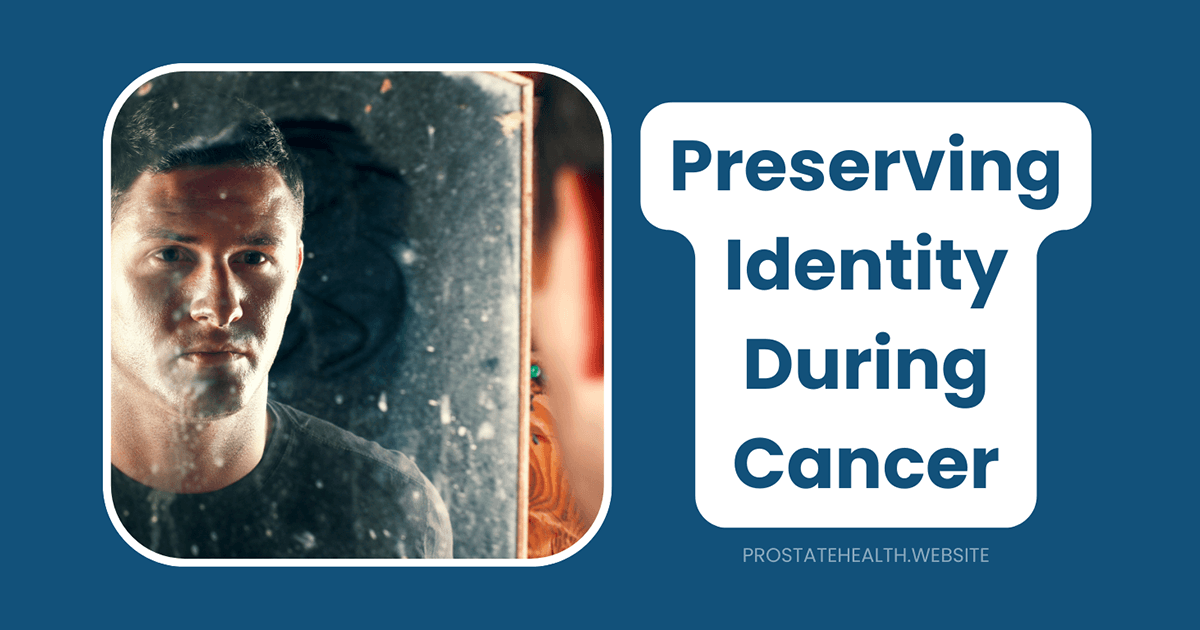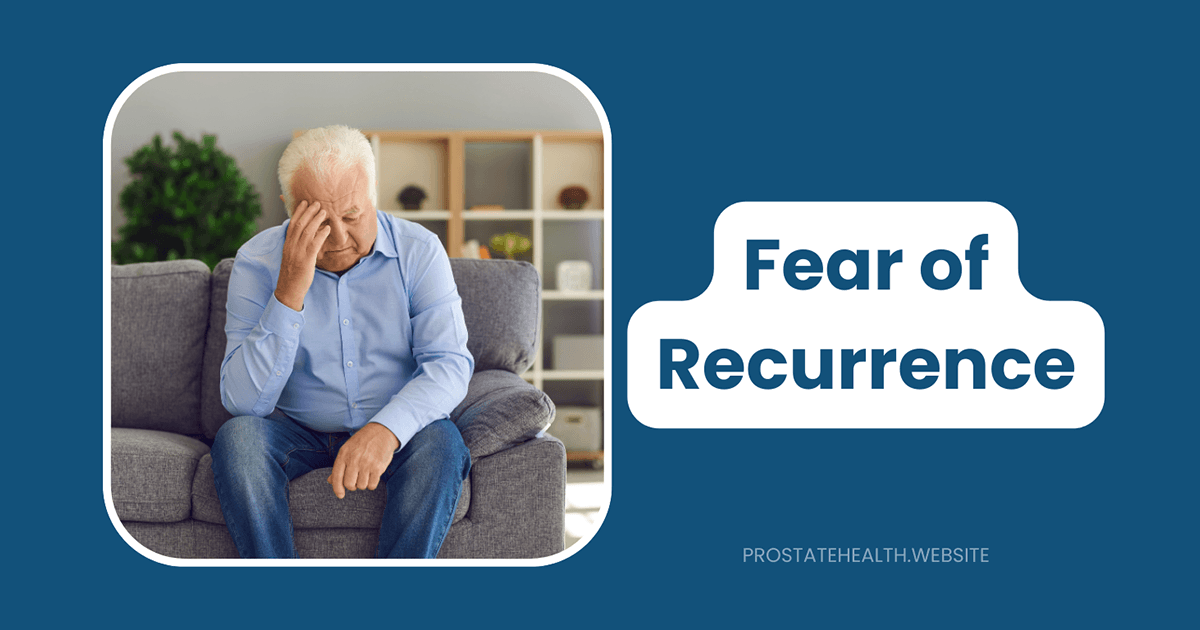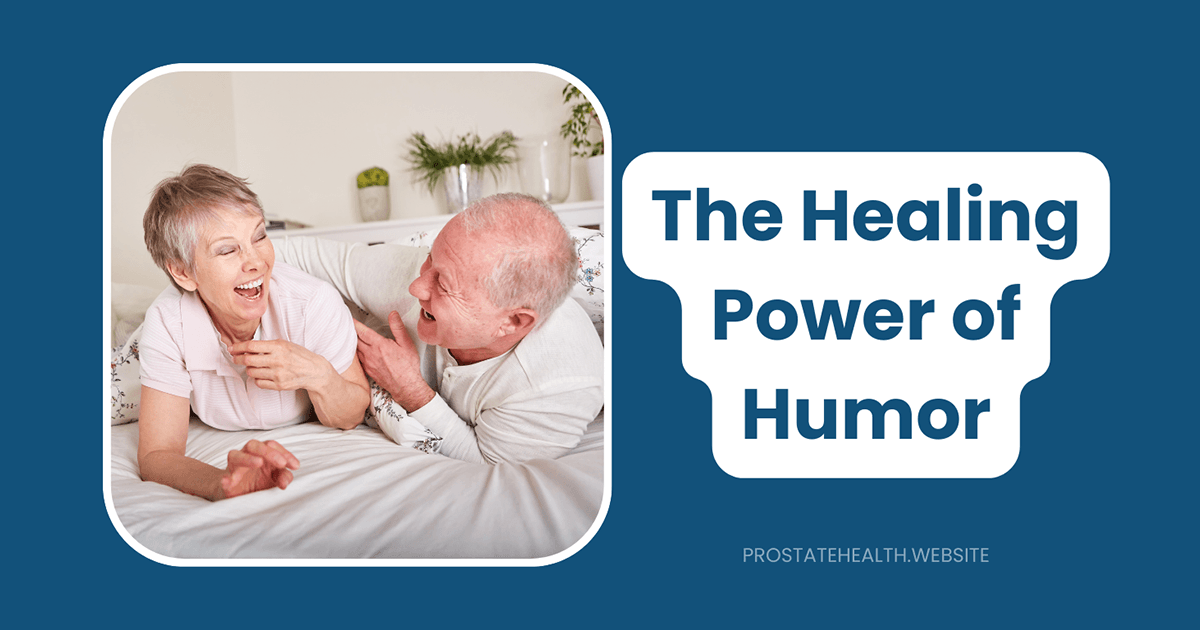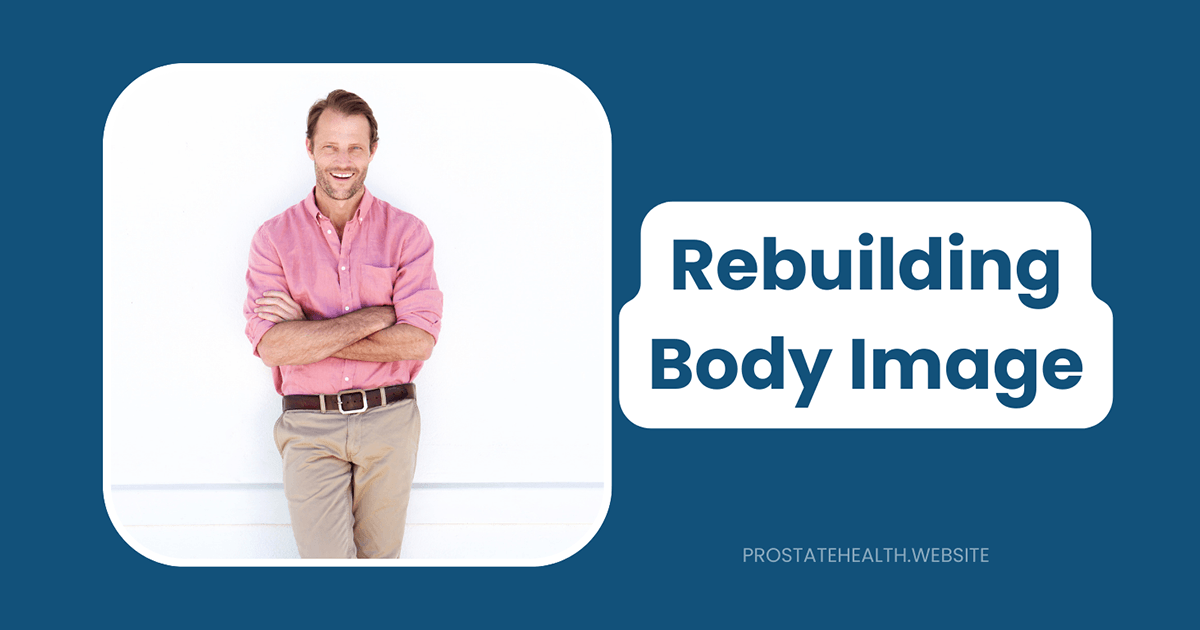Urinary Frequency: Practical Strategies for Daily Management
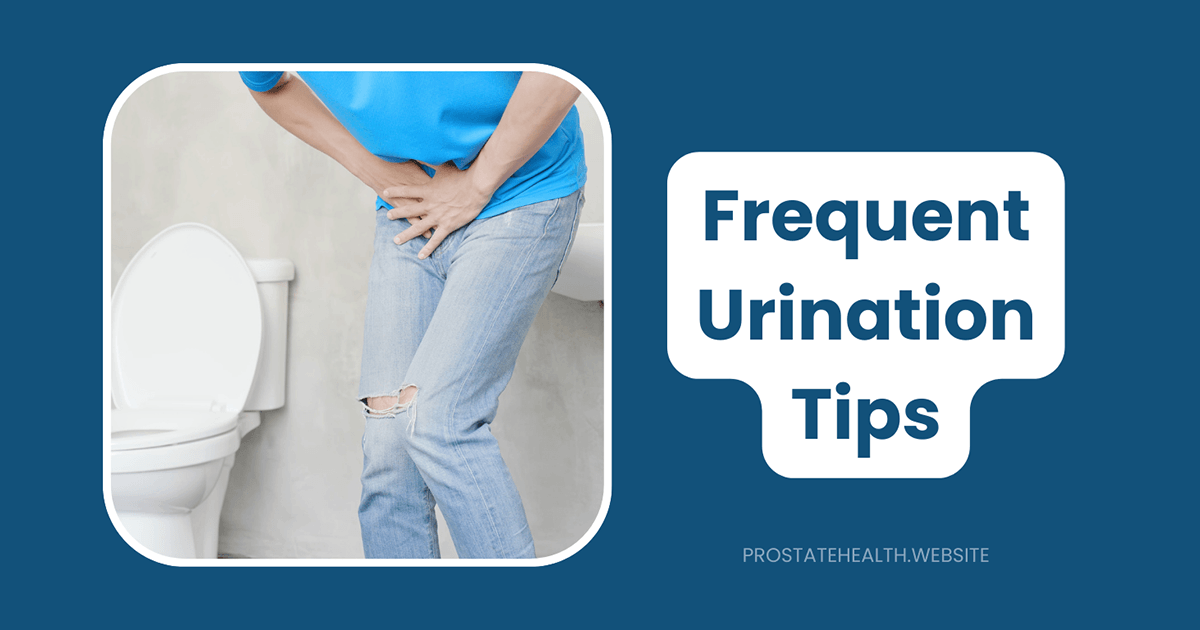
If you’re dealing with urinary frequency due to prostate issues, you know how significantly it can impact your daily life. The constant need to locate bathrooms, interrupted sleep, and anxiety about potential accidents can be both physically exhausting and emotionally draining.
As someone who has spent years advocating for men’s health, I’ve spoken with countless men navigating this challenging symptom. Whether your urinary frequency stems from benign prostatic hyperplasia (BPH), prostate cancer treatment, or other prostate conditions, the good news is that effective management strategies exist.
In this comprehensive guide, we’ll explore practical, evidence-based approaches to help you regain control and improve your quality of life.
What Causes Urinary Frequency in Men with Prostate Conditions?
Before diving into management strategies, it’s helpful to understand why urinary frequency occurs:
Benign Prostatic Hyperplasia (BPH)
BPH affects approximately 50% of men aged 51-60 and up to 90% of men over 80. As the prostate enlarges, it can compress the urethra and partially block urine flow, leading to:
- Incomplete emptying of the bladder
- More frequent urination attempts
- Urgency (sudden, strong need to urinate)
- Nocturia (waking up multiple times at night to urinate)
After Prostate Cancer Treatment
Different treatments for prostate cancer can affect urinary function in various ways:
Radical Prostatectomy: After surgery, about 30-50% of men experience increased urinary symptoms and urgency. While these symptoms often improve over time, some men have persistent issues.
Radiation Therapy: Nearly 45% of men report irritative voiding symptoms six months after external beam radiation, with most symptoms resolving by one year. After brachytherapy, over 70% of men experience urinary symptoms within six months, decreasing to 25% or less after two years.
Hormone Therapy: Androgen deprivation therapy (ADT) can sometimes contribute to urinary symptoms through effects on the bladder and urethral tissues.
Other Contributing Factors
Several other factors can worsen urinary frequency:
- Urinary tract infections
- Bladder stones
- Neurological conditions
- Certain medications (especially diuretics)
- Excessive fluid intake
- Consumption of bladder irritants (caffeine, alcohol)
- Constipation
- Obesity
Assessing Your Symptoms: The First Step to Management
Before implementing management strategies, it’s important to properly assess your symptoms:
The International Prostate Symptom Score (IPSS)
This validated questionnaire helps quantify the severity of your urinary symptoms. It includes questions about:
- Frequency of urination
- Urgency
- Nocturia
- Weak stream
- Straining
- Intermittency
- Incomplete emptying
Scores range from 0-35, with higher scores indicating more severe symptoms:
- Mild symptoms: 1-7
- Moderate symptoms: 8-19
- Severe symptoms: 20-35
Bladder Diary
Keeping a bladder diary for 3-7 days can provide valuable insights. Record:
- Times of urination
- Volume of urine (if possible to measure)
- Fluid intake (type and amount)
- Activities that trigger urgency
- Episodes of leakage
This information can help identify patterns and triggers, guiding your management approach.
These tools not only help you and your healthcare provider develop an effective management plan but also provide a baseline to measure improvement.
Lifestyle Modifications: The Foundation of Management
Simple lifestyle changes can significantly improve urinary frequency symptoms:
1. Fluid Management
Optimize total intake: Aim for 1.5-2 liters (about 6-8 cups) of fluid daily. Contrary to what you might think, severely restricting fluids can actually worsen symptoms by concentrating urine, which irritates the bladder.
Strategic timing: Drink more in the morning and early afternoon, and reduce intake in the evening (2-3 hours before bedtime) to minimize nighttime urination.
Check your urine: Urine should be light straw-colored. Dark urine indicates you need more fluids, while very clear urine might mean you’re drinking too much.
2. Dietary Adjustments
Limit bladder irritants: Reduce or eliminate:
- Caffeine (coffee, tea, cola, energy drinks)
- Alcohol
- Artificial sweeteners
- Carbonated beverages
- Spicy foods
- Acidic foods and juices (citrus, tomatoes)
- Chocolate
Try an elimination diet: Remove potential irritants for two weeks, then gradually reintroduce them one at a time to identify your specific triggers.
3. Weight Management
Research shows that excess weight puts pressure on the bladder and pelvic floor muscles. Even modest weight loss can improve urinary symptoms:
- An 8% weight loss has been associated with a 47% reduction in overall incontinence episodes
- Regular physical activity not only helps with weight management but also improves overall bladder function
4. Manage Constipation
Constipation can worsen urinary symptoms by putting additional pressure on the bladder:
- Increase fiber intake (aim for 25-30g daily)
- Stay well-hydrated
- Maintain regular physical activity
- Establish a consistent bowel routine
5. Smoking Cessation
Smoking is significantly associated with worse urinary symptoms. The coughing associated with smoking also increases pressure on the bladder and pelvic floor.
Bladder Training: Regaining Control
Bladder training is a behavioral technique that can help increase the time between urinations and the amount of urine your bladder can comfortably hold:
The Basic Approach
- Establish a baseline: Use your bladder diary to determine your current average time between urinations.
- Set a schedule: Begin by urinating at fixed intervals slightly longer than your current average (e.g., if you typically go every hour, start with 1 hour and 15 minutes).
- Manage urgency: When you feel the urge to urinate before your scheduled time:
- Sit down and lean slightly forward
- Perform quick pelvic floor contractions (5-10 rapid contractions)
- Take slow, deep breaths
- Distract yourself with mental activities (counting backward, solving puzzles)
- Wait until the urge subsides, then continue with your activities
- Gradually extend intervals: Once you’re comfortable with your current schedule, increase the time between urinations by 15-30 minutes.
- Set realistic goals: Aim to eventually reach a comfortable interval of 3-4 hours between bathroom visits during the day.
Tips for Success
- Be patient—bladder training typically takes 6-12 weeks to show significant results
- Expect some setbacks, especially during stressful times
- Continue using your bladder diary to track progress
- Combine with pelvic floor exercises for better results
Pelvic Floor Exercises: Strengthening Key Muscles
Pelvic floor exercises, also known as Kegel exercises, strengthen the muscles that support the bladder and help control urination. They’re particularly beneficial after prostate surgery but can help with various urinary symptoms:
How to Identify Your Pelvic Floor Muscles
The easiest way is to try stopping your urine flow midstream. The muscles you use to do this are your pelvic floor muscles. (Note: Do this only to identify the muscles, not as a regular exercise.)
Basic Pelvic Floor Exercise Routine
- Contract and hold: Tighten your pelvic floor muscles and hold for 5 seconds.
- Release and rest: Completely relax the muscles for 5 seconds.
- Repeat: Perform 10 contractions in a row.
- Multiple sessions: Do 3-6 sets throughout the day.
Advanced Techniques
Once you’ve mastered the basics:
- Increase duration: Gradually extend the contraction hold time to 10 seconds.
- Quick contractions: Add sets of rapid contractions (tighten and release quickly 10-20 times).
- Different positions: Practice while lying down, sitting, and standing.
- Functional integration: Perform contractions during activities that typically trigger leakage (coughing, lifting, etc.).
Using Biofeedback and Apps
For better results, consider:
- Biofeedback devices: These provide visual feedback on whether you’re correctly contracting your pelvic floor muscles.
- Smartphone apps: Apps like “Squeezy” (recommended by many healthcare providers) can help guide your exercises and track progress.
Consistency is key—most men need to practice daily for at least 6-12 weeks to see significant improvement.
Medical Management Options
When lifestyle modifications and behavioral techniques aren’t sufficient, several medication options can help manage urinary frequency:
For BPH-Related Symptoms
Alpha-blockers: These medications relax the muscles in the prostate and bladder neck, improving urine flow:
- Examples: tamsulosin (Flomax), alfuzosin (Uroxatral), silodosin (Rapaflo)
- Benefits: Work relatively quickly (within days to weeks)
- Considerations: May cause dizziness, fatigue, or ejaculation changes
5-alpha reductase inhibitors (5-ARIs): These medications shrink the prostate over time:
- Examples: finasteride (Proscar), dutasteride (Avodart)
- Benefits: Can significantly reduce prostate size and improve symptoms
- Considerations: Take 3-6 months to show full effect; may affect PSA levels and sexual function
Phosphodiesterase-5 (PDE5) inhibitors: Originally developed for erectile dysfunction, these can also improve urinary symptoms:
- Example: tadalafil (Cialis)
- Benefits: Can address both urinary symptoms and erectile dysfunction
- Considerations: Not suitable for men taking certain heart medications
Combination therapy: Some men benefit from combining an alpha-blocker with a 5-ARI, especially those with larger prostates and moderate-to-severe symptoms.
For Overactive Bladder Symptoms
Anticholinergics: These medications reduce bladder contractions:
- Examples: solifenacin (VESIcare), oxybutynin (Ditropan), tolterodine (Detrol)
- Benefits: Can significantly reduce urgency and frequency
- Considerations: May cause dry mouth, constipation, or cognitive effects in older adults
Beta-3 agonists: These newer medications relax the bladder muscle:
- Example: mirabegron (Myrbetriq)
- Benefits: Fewer side effects than anticholinergics
- Considerations: May affect blood pressure
Always discuss potential side effects and interactions with your healthcare provider, especially if you’re taking other medications.
Advanced Management Strategies
For men with persistent, severe symptoms despite lifestyle changes and medications, several advanced options exist:
Minimally Invasive Procedures for BPH
UroLift System: This procedure uses small implants to lift and hold the enlarged prostate tissue away from the urethra.
- Benefits: Preserves sexual function, can be performed in an office setting, rapid symptom relief
- Considerations: Less effective for very large prostates
Rezūm Water Vapor Therapy: Uses water vapor (steam) to destroy excess prostate tissue.
- Benefits: One-time procedure with lasting results, preserves sexual function
- Considerations: May take several weeks to see full symptom improvement
Prostate Artery Embolization (PAE): Blocks blood flow to parts of the prostate, causing it to shrink.
- Benefits: No sexual side effects, effective for very large prostates
- Considerations: Not widely available, requires specialized expertise
Neuromodulation for Overactive Bladder
Percutaneous Tibial Nerve Stimulation (PTNS): Involves inserting a thin needle near the ankle to deliver mild electrical pulses to nerves that influence bladder function.
- Benefits: Non-surgical, minimal side effects
- Considerations: Requires weekly office visits initially, then monthly maintenance
Sacral Neuromodulation: Involves implanting a small device that stimulates the sacral nerves that control the bladder.
- Benefits: Long-term solution for severe, refractory symptoms
- Considerations: Requires surgical implantation
Practical Daily Management Tips
Beyond medical treatments, these practical strategies can help you manage day-to-day:
For Home
- Optimize bathroom accessibility: Consider a bedside commode or urinal for nighttime use if mobility is an issue.
- Use a nightlight: Illuminate the path to the bathroom to prevent falls during nighttime trips.
- Wear easily removable clothing: Pants with elastic waistbands or Velcro closures can save crucial seconds.
For Work
- Strategic seating: Choose seats near bathroom exits during meetings or events.
- Schedule bathroom breaks: Set discreet reminders to urinate every 2-3 hours, even if you don’t feel the urge.
- Communicate selectively: Consider informing a trusted colleague or supervisor about your condition if appropriate.
For Travel
- Plan your route: Research bathroom locations along your journey using apps like “Flush” or “Toilet Finder.”
- Carry a “Just Can’t Wait” card: Available from many urological associations, these cards can help in emergency situations.
- Pack supplies: Bring absorbent products, a change of clothes, and plastic bags in case of accidents.
- Manage fluids strategically: Reduce intake before long trips without access to bathrooms, but stay adequately hydrated.
For Social Situations
- Choose the right timing: Schedule social activities when your symptoms are typically less severe.
- Be prepared: Know the bathroom locations in restaurants, theaters, and other venues.
- Consider selective disclosure: Sharing your condition with close friends can reduce anxiety about frequent bathroom trips.
When to Seek Additional Help
While urinary frequency is common with prostate conditions, certain situations warrant prompt medical attention:
- Sudden, severe changes in urinary patterns
- Blood in urine (hematuria)
- Pain or burning during urination
- Inability to urinate despite feeling the need (retention)
- Fever, chills, or back pain, which could indicate infection
- Significant impact on quality of life despite trying self-management strategies
Don’t hesitate to discuss persistent or bothersome symptoms with your healthcare provider. New treatments are continually emerging, and adjustments to your current management plan may provide significant relief.
The Psychological Impact: Addressing the Emotional Burden
Living with urinary frequency can take a psychological toll, including:
- Anxiety about finding bathrooms
- Embarrassment about frequent interruptions
- Sleep deprivation from nocturia
- Social isolation due to fear of accidents
- Relationship strain
Strategies to address these challenges include:
- Cognitive behavioral therapy (CBT): Can help manage anxiety and negative thought patterns
- Mindfulness practices: Reduce stress and improve coping with symptoms
- Support groups: Connect with others facing similar challenges
- Open communication: Discuss impacts with partners and close friends
Addressing both the physical and emotional aspects of urinary symptoms is essential for comprehensive management.
Looking Forward: Emerging Approaches
The field of urinary symptom management continues to evolve, with several promising developments on the horizon:
- Advanced diagnostics: 3D point-of-care ultrasound and simplified ambulatory urodynamics are making assessment more precise and convenient.
- Home monitoring: New devices and apps allow for better tracking of bladder function in your natural environment.
- Targeted medications: Drugs with fewer side effects and more specific actions on the lower urinary tract are in development.
- Regenerative medicine: Stem cell therapies to restore bladder and urethral function are being researched.
Conclusion: Taking Control of Urinary Frequency
While urinary frequency due to prostate conditions can be challenging, the wide range of management strategies available means you don’t have to simply endure this symptom. By combining lifestyle modifications, behavioral techniques, and medical treatments as needed, most men can achieve significant improvement.
Remember that successful management often requires a multi-faceted approach and some trial and error to find what works best for your specific situation. Be patient with yourself during this process, and don’t hesitate to advocate for your needs with healthcare providers.
With the right strategies and support, you can reduce the impact of urinary frequency on your daily life and regain a sense of confidence and control.

